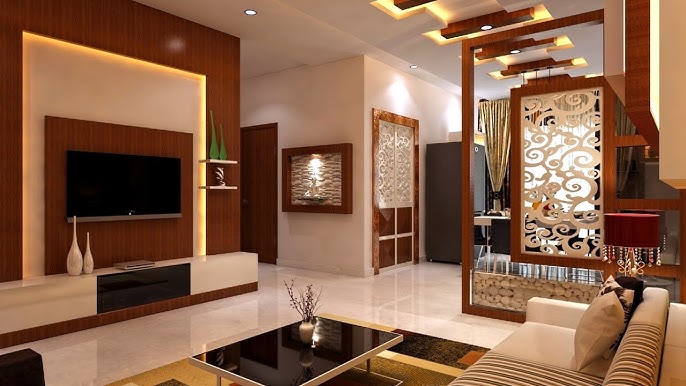Hire skilled interior design firms for modern and classic styles.
Transform Your Home With Vital Principles of Interior Style and Aesthetics
By recognizing the impact of shade theory and the importance of structure and patterns, one can create areas that are not only visually appealing however also deeply personal. Accomplishing this stability entails even more than mere decoration; it encompasses a strategic arrangement and an eager understanding of exactly how each component interacts within an area.
Comprehending Shade Theory
Understanding the principles of shade theory permits designers to develop spaces that resonate psychologically with residents while fulfilling useful requirements. Each classification plays an important duty in establishing consistency within an area.
The emotional influence of shades is extensive; warm hues such as reds and oranges evoke energy and heat, while trendy tones like blues and greens advertise peace and peace. The usage of complementary shades enhances aesthetic rate of interest, producing striking contrasts that can elevate an area's allure.
Neutral colors, on the other hand, act as a flexible background, enabling other layout aspects to radiate. It is vital to take into consideration variables such as illumination and the space's function when choosing a shade scheme, as these can change the understanding of colors throughout the day.
Ultimately, a well-considered color plan can change a room, fostering a feeling of comfort and design that aligns with the occupants' choices. Mastery of shade theory is, consequently, a crucial ability for any kind of interior developer aiming to develop unified and inviting environments.
Attaining Balance in Layout
How can designers accomplish a sense of stability in their spaces? Accomplishing equilibrium in layout is basic to creating unified insides. Designers can use 3 primary kinds of equilibrium: in proportion, asymmetrical, and radial. Balanced equilibrium includes arranging aspects equally around a main factor, promoting a sense of order and tranquility. This type typically features sets of furniture or art work, boosting aesthetic security.
Unbalanced balance, on the various other hand, relies upon differing aspects that still attain a natural appearance. This technique permits for even more dynamic and casual setups, providing passion while keeping equilibrium. By thoroughly picking differing sizes, shades, and structures, developers can produce an aesthetically compelling space that feels well balanced yet energised.
Radial equilibrium emphasizes a main prime focus with components radiating outward. This design is generally seen in circular layouts, where furniture and decoration create a cohesive border that draws the eye internal.
Inevitably, accomplishing balance calls for thoughtful factor to consider of range, proportion, and the connections in between components. miami interior design. By skillfully applying these equilibrium principles, designers can change areas into atmospheres that really feel both cosmetically pleasing and functionally harmonious, boosting the total experience for passengers
Value of Spatial Awareness

A keen sense of spatial awareness allows developers to recognize focal points within an area, directing the customer's attention to key attributes while keeping a general feeling of unity. It likewise assists in the strategic placement of lights, which can significantly influence the assumption of space and mood. Moreover, understanding spatial connections allows the developer to deal with the particular needs of occupants, making sure that each area offers its intended function without endangering aesthetics.
Ultimately, spatial recognition is essential for making the most of the potential of any type of indoor room. By very carefully taking into consideration the interaction in between dimensions, layout, and function, designers can develop settings that not just fulfill useful requirements but also evoke a feeling of comfort and beauty, improving the overall living experience.
Integrating Structure and Patterns
Embracing a diverse variety of appearances and patterns can substantially boost the visual and responsive charm of an indoor room. The tactical use various materials-- such as timber, metal, material, and rock-- develops depth and rate of interest, making a space really feel a lot more inviting and dynamic. Integrating smooth surfaces with harsh textures can establish a balance that draws the eye and involves the detects.
When including patterns, consider both range and repetition. Big patterns can act as centerpieces, while smaller sized, subtle styles can complement other components without frustrating the room. Layering patterns, such as see pairing floral pillows with candy anchor striped throws, adds intricacy and a sense of consistency if executed attentively.
It is additionally critical to maintain a cohesive shade palette, guaranteeing that appearances and patterns collaborate instead of contend for focus. By choosing a couple of key appearances and patterns, you can produce a combined visual that reflects your personal design while enhancing the total atmosphere of the room. Ultimately, the mindful unification of these components can transform a mundane area into an advanced environment abundant with character and warmth.
Customizing Your Area
Producing a room that reflects your individuality is vital to attaining a really inviting environment. Customization in interior style permits you to infuse your distinct design and interests into your home, transforming it from a mere sanctuary right into a sanctuary that talks to that you are. Begin by picking a shade scheme that resonates with your emotions-- bold colors can invigorate, while soft tones supply harmony.
Integrate artwork and decoration that reflect your enthusiasms, whether it be travel, nature, or abstract principles. Displaying personal collections, such as publications, photos, or mementos, can evoke cherished memories and develop focal points within an area. Additionally, take into consideration tailoring practical pieces, like upholstered furniture, to straighten with your aesthetic choices.

Final Thought
Finally, the improvement of a home via the crucial concepts of interior design and aesthetic appeal necessitates an extensive understanding of shade concept, equilibrium, spatial awareness, appearance, and customization. Each component adds significantly to producing an unified and functional living setting - miami luxury interior design. By thoughtfully integrating these principles, individuals can enhance the aesthetic charm and emotional resonance of their spaces, eventually promoting a home that shows distinct identities while providing comfort and usefulness